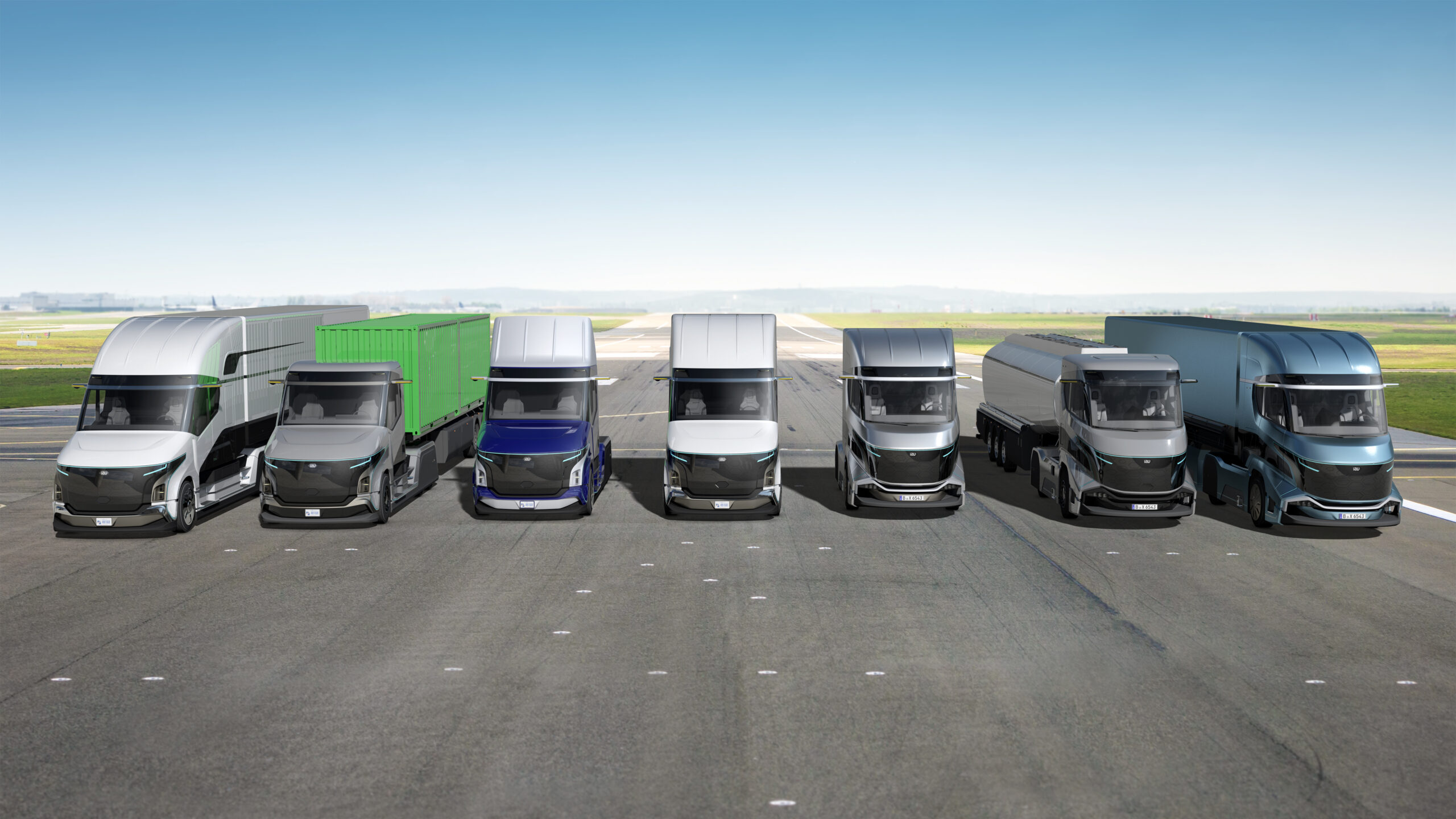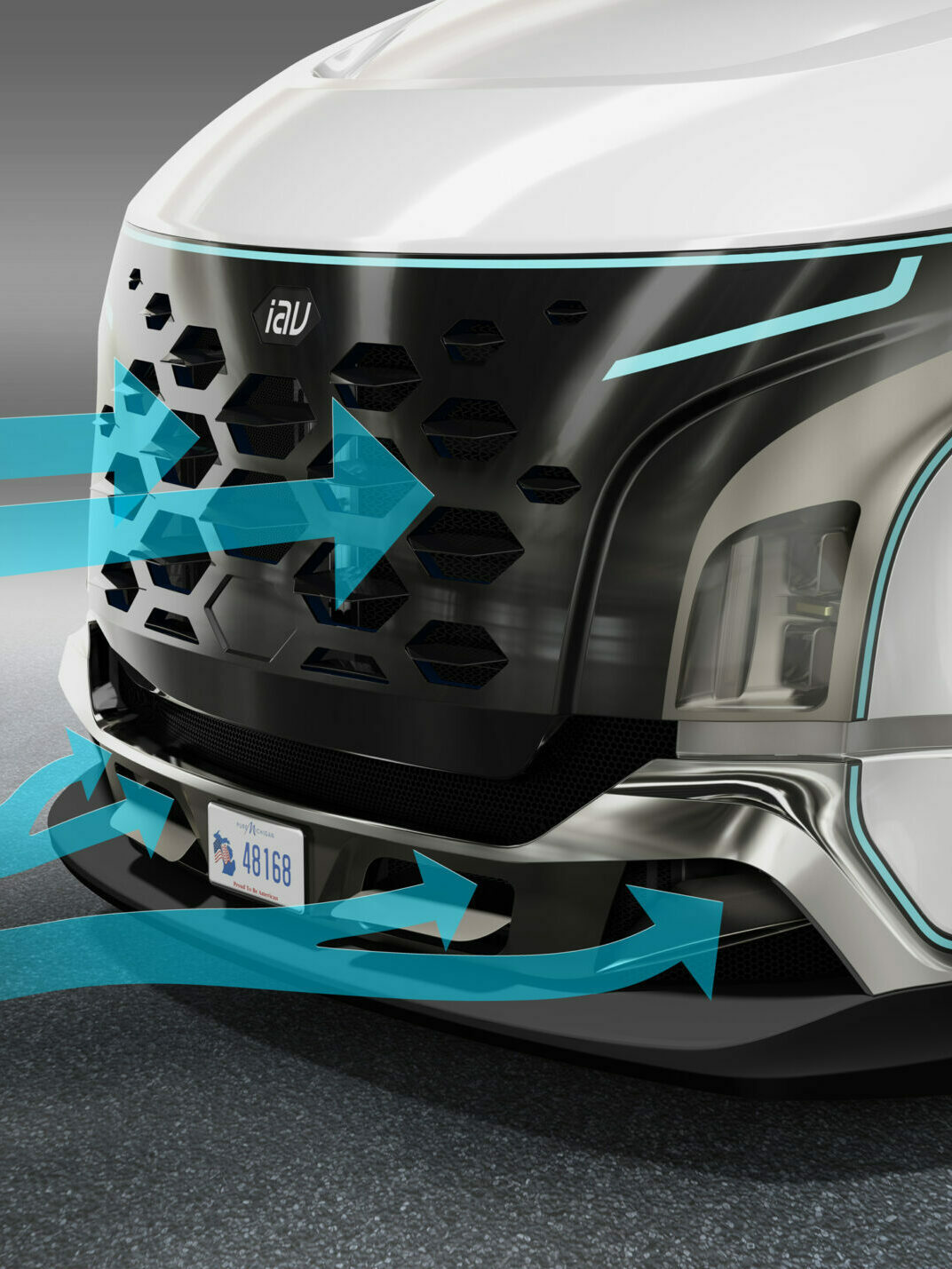On-Highway Commercial Vehicles and Mobile Machinery
The current CO2 regulations are the most important driver when it comes to the technological development of tomorrow’s commercial vehicles. At IAV, consumption-optimized overall concepts are achieved by taking into account all vehicle systems across all disciplines in a highly integrated manner. And, of course, we always consider the local requirements of our customers around the globe.

The market for commercial vehicle will change fundamentally. The need for transport will most likely increase in the future, while the requirements on transport will become more multi-faceted. This is in part due to the growing online trade and the individualization of the consumer business. For this reason, commercial vehicle manufacturers must offer flexible and economical solutions. In addition, the logistics industry is experiencing a shortage of drivers – more than 10,000 in Germany alone. So it is equally important to make the truck drivers’ workplace more appealing. Assistance systems and a higher level of automation can play a role in this.
«All trades are on board, and we are offering solutions from a single source – from concept through to series-ready commercial vehicle.»
— Global Key Account Commercial Vehicles
A high degree of automation with the help of artificial intelligence will contribute to managing the growing demand for transport in a timely and cost-efficient manner. For IAV, this is mostly about vehicles that are networked with each other and with their environment. Car-to-X (C2X) Communication in combination with the latest sensor concepts and object recognition continues to be a cornerstone for the safe introduction of autonomous trucks. Continuous data transmission and evaluation can also reduce downtime and maintenance costs with the help of condition-based maintenance. IAV can contribute extensive practical experience to projects on these topics.

The development objectives in the commercial vehicles sector are all the same: Some markets are determined almost exclusively by operating costs. In other markets, the emissions or CO2 legislation is decisive. Today, the technical challenge lies in finding suitable, efficient, and economical solutions that work for the highly different boundary conditions worldwide.
The most important drivers in terms of the technical development of commercial vehicles in the main markets are currently the CO2 fleet targets, which in Europe stipulate reductions of 15% by 2025 and 30% by 2030. In addition, the emissions requirements from the Euro VII regulations and CARB ultra-low NOx proposals, which have yet to be defined, must also be adhered to. Depending on the application, there will be greater diversification of drive concepts in the future, with electric drives and some fuel cells playing the main role in cities. But hydrogen and gas engines as well as synthetic fuels are also interesting for commercial vehicles. Considering that today’s drives are already highly efficient, it is important to include the entire vehicle in the development process, i.e., through waste heat recovery or optimized aerodynamics, in order to achieve further fuel savings. It is also important to understand that modern drives can only really play to their strengths in more advanced vehicle architectures. We have demonstrated what we are capable of in numerous series projects for well-known OEMs.
«Besides new vehicles, it is also important to retrofit the existing fleet with new drives. In terms of circular economy, this can make a significant contribution to zero emissions transport.»
— Commercial Vehicles E-Mobility

IAV offers its customers worldwide services that enable them to meet local requirements. Due to our global orientation, we are always where our customers need us, and can advise them competently depending on the regional specifics and applications. We use state-of-the-art development tools and methods at our sites. As experienced experts, we can handle the entire development from start to finish, and we can put our OEM customers in touch with the right suppliers for their project, if necessary.
We meet the current challenges with virtual development processes and model-based development. We are best in class in this respect. And we achieve this with high-end testing equipment: IAV has more than 40 engine test benches in Germany alone (seven of which are for heavy-duty engines). Four test benches are located in the US. We also have numerous component and special test benches, including those for turbochargers, injection systems, and exhaust gas aftertreatment.
«Sustainable CO2 reduction is only possible when the entire vehicle over an extended period of time of a life cycle is taken into consideration. Always closely coordinated with regional specifics and a total cost analysis.»
— Global Business Development Commercial Vehicles
With our knowledge and our first-class equipment, we enable the reduction of CO2 emissions and solve traffic problems in city centers. We already consider the entire life cycle (well-to-wheel) in our concept design, so our customers benefit from solutions that are actually sustainable.
